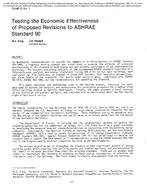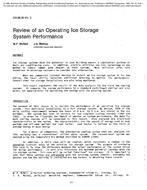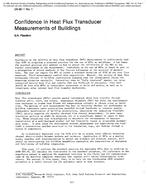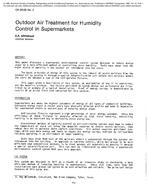-
-
Available Formats
- Options
- Availability
- Priced From ( in USD )
-
Available Formats
-
- Immediate download
- $16.00
- Add to Cart
Customers Who Bought This Also Bought
-

CH-85-12-1 -- Testing the Economic Effectiveness of Propo...
Priced From $16.00 -

CH-85-20-3 -- Review of an Operating Ice Storage System P...
Priced From $16.00 -

CH-85-11-1 -- Confidence in Heat Flux Transducer Measurem...
Priced From $16.00 -

CH-85-09-2 -- Outdoor Air Treatment for Humidity Control ...
Priced From $16.00
About This Item
Full Description
The cause of the cyclical variation of respiratory illnesses that are highest in winter and lowest in summer has been the subject of many papers and investigations. The most common hypothesis is that the cycle is caused by the variation of indoor relative humidity, which is lowest in winter and highest in summer. Eight studies reported in the literature compare absence from work or number and duration of respiratory illnesses of the occupants of two building or two rooms, one of which is maintained at a higher relative humidity than the other. In six of the eight studies, the absence from work or the occurrence of respiratory illnesses are significantly lower in the humidified space. This paper reports the latest study that was conducted in hospitals and discusses the difficulties in assessing the results of the investigations. It concludes there is a high probability that increased indoor relative humidity in winter decreases the number of respiratory illnesses and that further experiments are warranted in view of the cost of absenteeism from work.





